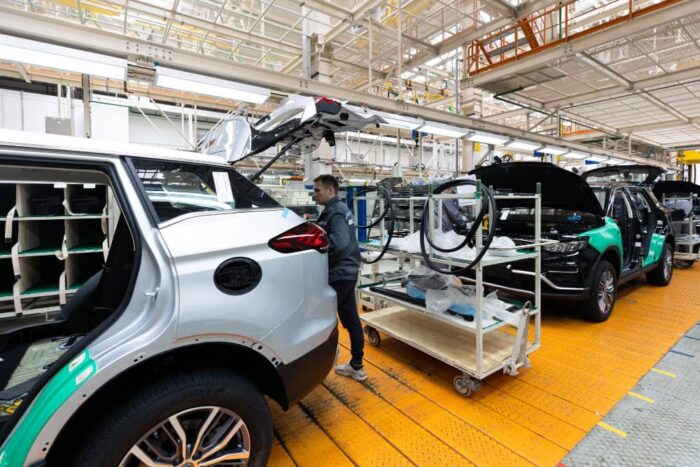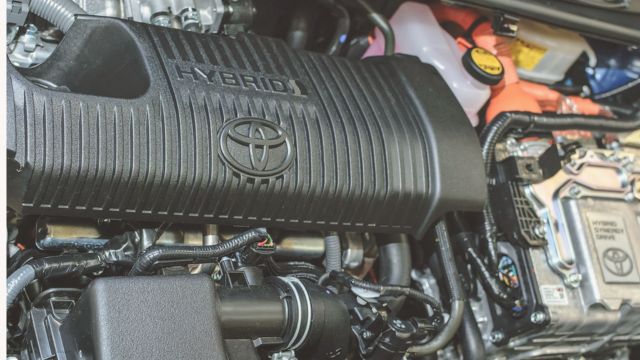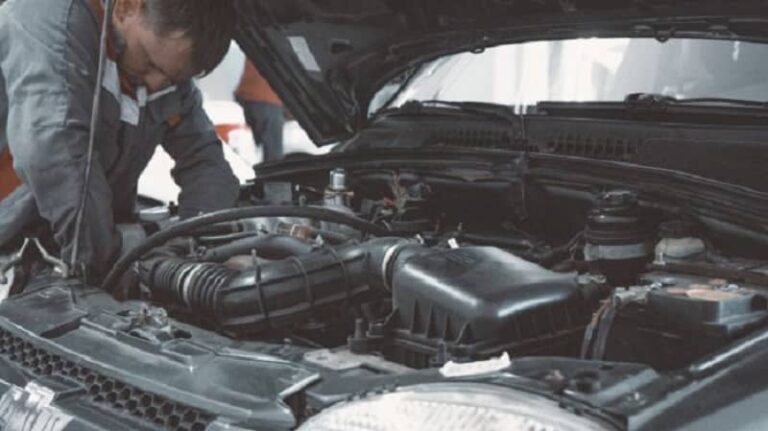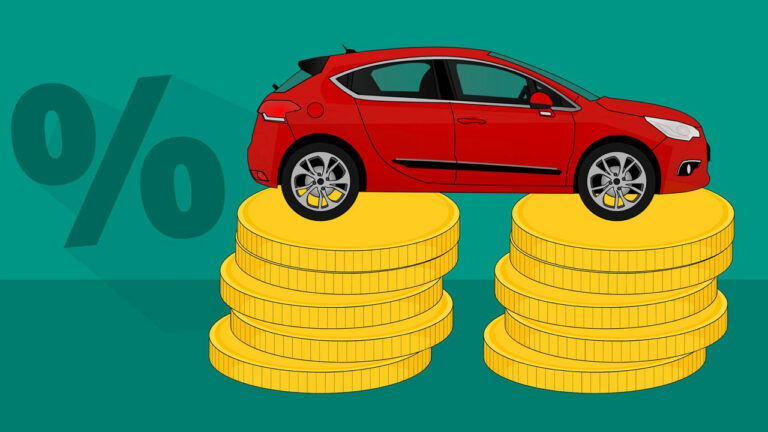Electric vehicles have, over the years, gained a lot of popularity worldwide. According to Statista, there are now 25.9 million electric vehicles in the world, and this number grows daily.
If you have an automotive business or are thinking about setting up your own and would like to work with electric vehicles, then you need to have an understanding of the main components of electric vehicles and their functions.
In this article, we will take a good look at the main electric vehicle components and also mention the functions of each.
What are Electric Vehicles?
Electric vehicles, or EVs for short, are cars that run on electricity instead of gasoline or diesel.
They’re like regular cars, but with an eco-friendly twist! Instead of a traditional engine, they have an electric motor powered by a battery pack. So, how do they work?
Well, the battery pack is the simple answer. It stores electrical energy that is used to power the electric motor, which turns that energy into mechanical power to move the car.
To charge an electric vehicle, you simply plug it into a charging station or an electrical outlet.
Just like charging your phone, but on a larger scale! The battery pack gets filled up with electricity, and then you’re ready to hit the road again. Be aware that there are different types of electric vehicles out there.
Some are called battery electric vehicles (BEVs) because they rely entirely on electricity to run.
Others are plug-in hybrid electric vehicles (PHEVs), which have both an electric motor and a regular engine. PHEVs can be charged up like a BEV, but they also have the option to use gasoline when needed. It’s like eating your cake and having it.
Electric vehicle components actually depend on the type of electric vehicle, so let’s take a look at the different types of electric vehicles.
Read Also: The Ultimate Guide To Electric Vehicle (EV) API By Vehicle Databases
Types of electric vehicles
Battery Electric Vehicles (BEVs)
Battery Electric Vehicles, or BEVs for short, run entirely on electricity, meaning they don’t need any gasoline at all.
They’re like your smartphone on wheels, but much bigger and way cooler!
Just plug them into a charging station or an electrical outlet, make sure they are adequately charged, and you’re good to go.
Plug-in Hybrid Electric Vehicles (PHEVs)
Now, if you want a little more flexibility, you might want to check out Plug-in Hybrid Electric Vehicles, or PHEVs.
They have an electric motor and a regular combustion engine, giving you the option to charge them up like a BEV and run solely on electricity for shorter trips, but when you need to go the distance, the combustion engine kicks in and saves the day.
PHEVs are perfect for those who want to have an electric vehicle but still have the safety net of a regular engine.
Hybrid Electric Vehicles (HEVs)
Now, if you’re not quite ready to make the full leap into electric vehicles, Hybrid Electric Vehicles, or HEVs, might be your best option.
These cars use a combination of an internal combustion engine and an electric motor.
The electric motor kicks in during certain situations, like when you’re idling or cruising at low speeds, to save fuel and reduce emissions.
They help in increasing efficiency and optimizing fuel consumption and don’t require charging.
General Electric Vehicle Components

Now you can see that with the differences between the three types of electric vehicles, there have to be unique differences in their configurations, but there are still some general electric vehicle components, and they are:
- Traction battery pack
- Power inverter
- Auxiliary batteries
- DC-DC Converter
- Electric motor
- Charge Port
- Onboard charger
- Vehicle Control Unit
- Transmission
- Thermal system (cooling)
1. Traction Battery Pack
This powerful component stores and supplies electrical energy to propel the vehicle.
Typically composed of numerous individual cells, the battery pack is responsible for providing the necessary power to drive the electric motor.
It’s essential to understand the capacity, voltage, and chemistry of the battery pack, as they directly impact the vehicle’s range, performance, and charging capabilities.
2. Power Inverter
Another important electric vehicle component is the Power Inverter.
Electric vehicles rely on power inverters to convert the direct current (DC) stored in the battery pack into the alternating current (AC) required by the electric motor.
This conversion ensures optimal motor performance and efficiency, resulting in smooth acceleration and enhanced control over the vehicle’s power output.
3. Auxiliary Batteries
In addition to the main traction battery pack, electric vehicles often have auxiliary batteries.
These smaller batteries are responsible for powering various systems in the vehicle, such as the lights, infotainment, and other electronic components.
They keep everything running smoothly and ensure you have all the modern comforts you need.
4. DC-DC Converter
The DC-DC converter is a nifty little gadget that takes the high-voltage DC power from the main traction battery pack and converts it to lower-voltage DC power.
This ensures that the auxiliary systems, such as the 12-volt electrical system, receive the appropriate voltage levels to operate efficiently.
It’s like a voltage regulator for the various electronics in the car.
5. Electric Motor
The electric motor is the workhorse of an electric vehicle.
It converts electrical energy from the battery into mechanical energy, generating the force needed to propel the vehicle.
The motor’s design and construction can vary, with options such as AC induction motors or permanent magnet motors.
6.Charge Port
The charge port is where electric vehicles connect to external power sources for recharging.
Just like fueling up at a gas station, you connect the charging cable from an external power source (charging station) to the charge port to recharge your battery pack.
Different EV models may support various charging standards, such as Level 1, Level 2, or DC fast charging, each with different charging speeds and compatibility requirements.
7. Onboard charger
Electric vehicles are equipped with onboard chargers that efficiently convert AC power from charging stations or electrical outlets into the DC power required to recharge the battery pack.
These chargers are designed to optimize charging time and ensure the safety and reliability of the charging process.
With advanced charging technologies, electric vehicles can be charged conveniently at home or on the go, promoting accessibility and reducing the barriers to widespread electric vehicle adoption.
8. Vehicle Control Unit
The vehicle control unit acts as the brain of an electric vehicle, coordinating the operation of various components and systems.
It collects data from sensors throughout the vehicle, such as speed, temperature, and battery status, to optimize performance, efficiency, and safety.
The VCU also manages functions like traction control, stability control, and energy management, ensuring a smooth and responsive driving experience.
9. Transmission
While traditional internal combustion engine vehicles often have complex transmissions, electric vehicles usually have a simpler transmission system.
Many EVs have a single-speed transmission or even a direct-drive system.
This means smooth, seamless acceleration without the need for shifting gears.
It’s like having an automatic transmission that knows exactly what gear you need at any given moment.
So, those are the electric vehicle components that are common among all three EV types.
Read Also: The Ultimate Guide To Electric Vehicle (EV) API By Vehicle Databases
Electric Vehicle Specifications API
If you are an electric vehicle dealer, auto repair mechanic, or run any automotive business requiring electric vehicle components and specifications, then we would recommend integrating the Electric Vehicle Specifications API provided by Vehicle Databases.
After successful integration of the Electric Vehicle Specifications API into your website and mobile applications, you can instantly determine the accurate specifications of any vehicle whenever necessary.
The information you can access with this API includes:
- Dimensions
- Suspension/handling information
- Fuel economy
- Fuel consumption
- Engine & transmission data
- Battery range
- Battery capacity
- Charging time and more
- Interior features
- Exterior features
- Comfort and convenience features
- Entertainment features
- Performance specifications and more
Getting Started With the Electric Vehicle Specifications API
Interested in this API? Vehicle Databases offers 15 free credits for automotive business owners and developers to try out our APIs. To get started and get your free credits, simply follow these steps:
- Visit our homepage and navigate to the free trial page.
- Fill out the provided form with your information and business details.
- Select the APIs that are most relevant to your business.
- Proceed to create your account.
You will immediately receive a confirmation and get 15 free credits to explore and verify the accuracy, responsiveness, and conciseness of our APIs and the information they provide. Other APIs provided by Vehicle Databases include:
- OCR API services
- VIN decoding API
- Vehicle specification API
- Vehicle market value API
- Vehicle history API
- Vehicle services API
- Vehicle warranty API
- Vehicle recalls API
- Fuel economy API
- Auction history API
- Sales history API
- Vehicle media API
- Window sticker API, and more
As technology continues to improve, electric vehicles are becoming more popular and accessible.
The range, or how far you can go on a single charge, is getting better, and there are more charging stations popping up everywhere.
So, if you want to grow your automotive business, embracing electric vehicles is the best step you can take.
With this in mind, to provide accurate electric vehicle specifications to consumers, we would recommend integrating our APIs into your websites and mobile applications.



